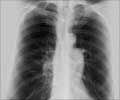- Bile Duct Cancer Stages - (http://www.cancer.org/cancer/bileductcancer/detailedguide/bile-duct-cancer-staging)
What is Bile Duct Cancer?
Bile duct cancer is called cholangiocarcinoma. It originates in the ducts either within the liver (intrahepatic cancer), the point where the bile ducts emerge from the liver (perihilar cancer) or outside the liver (extrahepatic cancer). Perihilar cancers are most common among the three.
Bile duct cancer is more common in South East Asia and rare in the West.
Bile Duct Cancer Statistics
- In USA about 2000 to 3000 people are diagnosed with bile duct cancer each year.
- 1000 new cases are diagnosed each year in the United Kingdom.
- 5 year relative survival rate is 17.5%
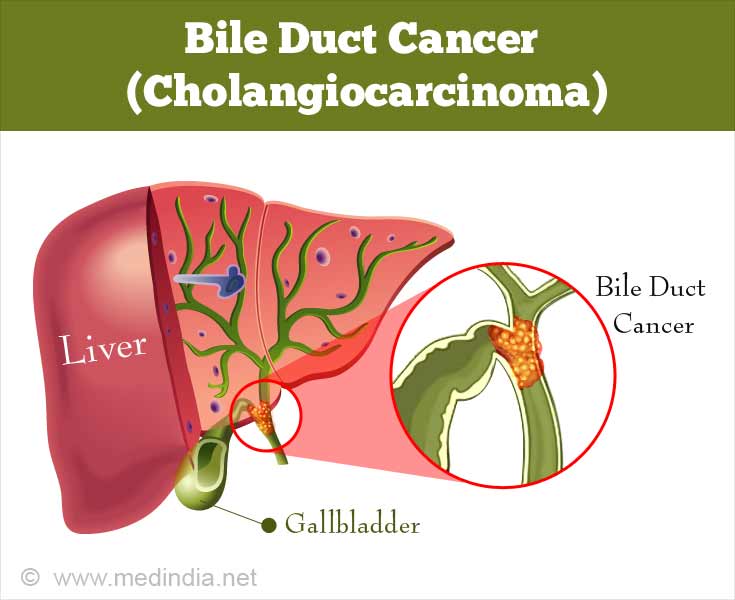
The approximate incidence rate of intrahepatic cancer is as follows -
- Thailand - 96/100,000 in men and 38/100000 in women
- South Korea - 75/100000 men and 16/100000 women
- United States - It is approximately 0.85/100,000 people with a male to female ratio of 1.5.
- Three to four thousand new cases of bile duct cancer are diagnosed in the United States every year and the number is on the rise.
About Liver and Bile
The liver secretes a juice called bile that helps in digestion of dietary fat. Bile travels through a network of channels called bile ducts. These channels start in the liver where small ductules join to form bigger ducts.
They emerge from the liver as two main branches, the left and right hepatic ducts. These branches join to form the common hepatic duct outside the liver. The common hepatic duct in turn fuses with the cystic duct coming from the gall bladder to form the common bile duct. The common bile duct ends in the first part of the intestine called the duodenum.
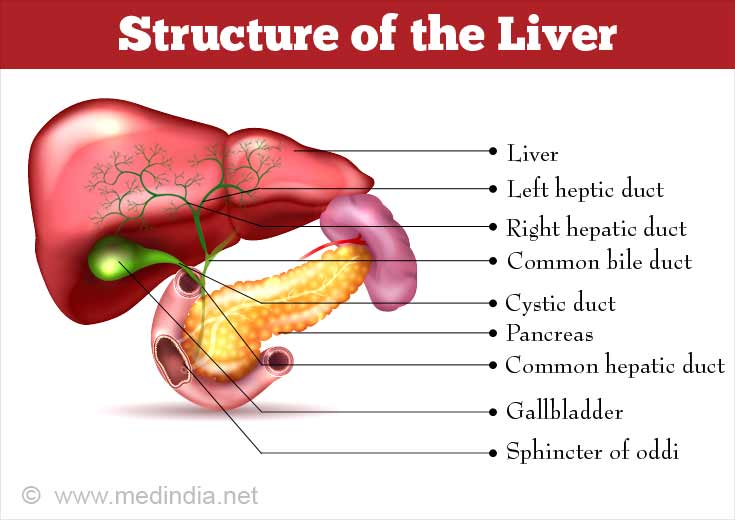
What are the Causes & Risk Factors for Bile Duct Cancer?
Bile duct cancer is common in patients with conditions that irritate the bile duct over prolonged periods.
The exact cause of bile duct cancer is not known. Some people are at an increased risk for this cancer. These include:
- Asians compared to the Western population
- Men compared to women
- Obese people
- People between 50 and 70 years of age
- People who smoke
- Diabetes patients
- Patients with viral infections like hepatitis B, hepatitis C and HIV
- Patients with liver conditions like cirrhosis, bile duct tumors and biliary papillomatosis
- Patients with conditions that irritate the bile ducts over a long period. These conditions cause inflammation of the bile ducts and predispose a patient to cancer. These include primary sclerosing cholangitis (inflammation), liver fluke (kind of worm) infestation, bile stones and abnormalities of bile ducts present from birth such as cysts
- People exposed to some chemicals and drugs such as asbestos, Thorotrast, dioxin, methyldopa, isoniazid and the older oral contraceptives
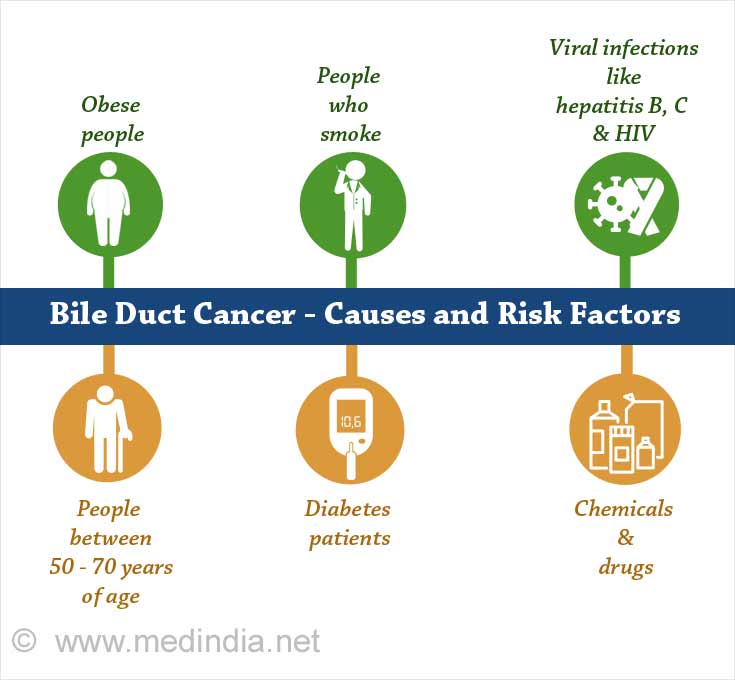
What are the Signs & Symptoms of Bile Duct Cancer?
The symptoms and signs of bile duct cancer are:
- Patients with intraductal bile duct cancer have dull abdominal pain, weight loss, feeling of uneasiness and decreased appetite.
- In hilar and extrahepatic cancers, some of the symptoms are due to obstruction to the flow of bile. These patients have abdominal pain, itching, loss of appetite, nausea, vomiting, jaundice, pale stools, dark urine and weight loss.
- The doctor may detect an increase in size of the liver and rarely an abdominal swelling on examination.
How Do You Diagnose Bile Duct Cancer?
It is important to diagnose bile duct cancer early to prevent its progression into late stages. The tests used to diagnose bile duct cancer are
Blood Tests
The patient has to undergo blood tests called liver function tests. These may be abnormal in a patient with bile duct cancer.
The level of certain proteins in the blood that may indicate presence of this type of cancer (CEA and CA 19-9) may also be increased. These chemicals are called tumor markers and increase in their level indicates cancer. However, their level may be increased in some other cancers or in some inflammatory condition as well.
Radiological Tests
- Non-invasive Tests: Radiological tests such as ultrasound, CT, MRI, PET scan and MRCP (Magnetic resonance cholangiopancreatography) are used to diagnose bile duct cancer. These are noninvasive tests i.e. the doctor can do the tests without much instrumentation.
- Invasive Tests: Some tests require certain instruments to be introduced into the body. These include:
- Endoscopic Ultrasound: An ultrasound probe is introduced at the end of an endoscope via the mouth into the small intestine. The ultrasound images thus obtained are from an area very close to the bile ducts. Sometimes, the probe may be inserted into the bile ducts. This procedure is called intraductal ultrasound. Aspiration or biopsy of the growth may also be taken.
- Endoscopic Retrograde Cholangiography: The doctor introduces a thin tube called an endoscope through the mouth till the bile duct opening in the small intestine. He then inserts a small plastic tube through the endoscope into the bile duct. He may take a biopsy of any suspicious areas. He injects a contrast medium (or dye) into the bile ducts and takes x-rays to examine for tumors.

- Percutaneous Transhepatic Cholangiography: In this test, the doctor passes a thin flexible needle into the liver through the abdomen, and through this needle, he introduces a dye to visualize the bile ducts.
- Angiography: In this test, the doctor introduces a dye into the blood vessels to check if they are affected or blocked by the tumor.
Rarely a biopsy is required and can be done during the test.
What are the Stages of Bile Duct Cancer?
Once bile duct cancer is diagnosed, it is staged to decide on the treatment and assess the outcome of the disease. According to the American Joint Committee on Cancer, staging is done for intrahepatic and extrahepatic cancers separately. Extrahepatic cancers are further divided into extrahepatic perihilar or distal extrahepatic.
Intrahepatic cancers are divided into the following stages –
- Stage 0 - (or Carcinoma in Situ) – The cancer is limited to the innermost lining of the bile duct.
- Stage I - The cancer has spread to the deeper layers of the bile duct but not lymph nodes or other organs.
- Stage II - The cancer is either a single tumor that has invaded a blood vessel or multiple tumors that have not spread.
- Stage III - The cancer has spread locally to neighboring structures like intestines, stomach, abdominal wall, diaphragm or lymph nodes around the portal vein. It has not spread to other lymph nodes or organs.
- Stage IV - This stage is divided into Stage IVA and Stage IVB.
- In Stage IVA, the cancer has spread through the liver along the bile ducts or to lymph nodes but not distant organs.
- In Stage IVB, the cancer has spread to distant organs.
Stages of Extrahepatic perihilar cancer –
- Stage 0 - (or Carcinoma in Situ) – The cancer is limited to the innermost lining of the bile duct.
- Stage I – The cancer has spread to the deeper layers of the bile duct but not lymph nodes or other organs.
- Stage II – The cancer has spread through the bile duct into the surrounding fat or liver tissue but not lymph nodes or other organs.
- Stage III – Stage III is divided into Stage IIIA and Stage IIIB.
- Stage IIIA - The cancer invades the main blood vessels of the liver on one side.
- Stage IIIB - The cancer spreads to nearby lymph nodes.
- Stage IV - Stage IV is divided into Stage IVA and Stage IVB.
- In Stage IVA, the cancer invades branches of the main blood vessels of the liver on both sides, or part of the cancer has spread into other bile ducts while another part of the tumor invades one of the main blood vessels. The cancer may have spread to nearby lymph nodes.
- In Stage IVB, the cancer has spread to distant lymph nodes or distant organs.
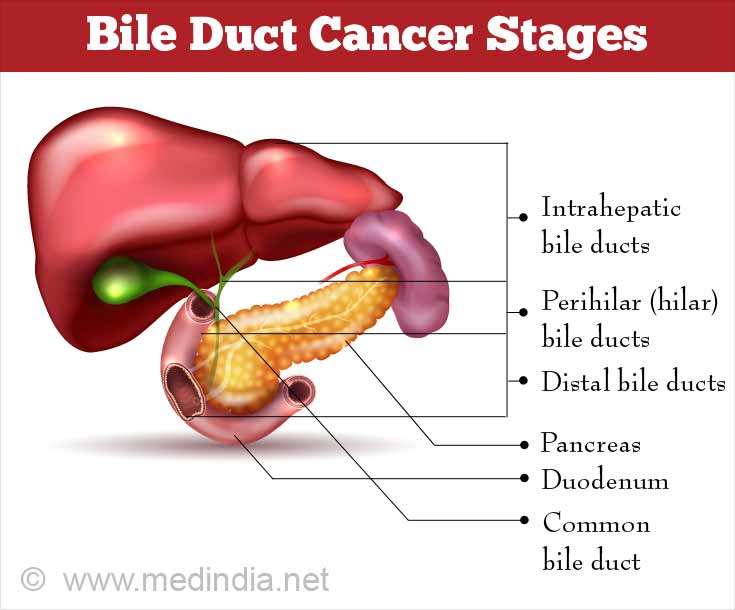
Distal extrahepatic bile duct cancer stages include –
- Stage 0 - (or Carcinoma in Situ) - The cancer is limited to the innermost layer of the bile duct.
- Stage I - Stage I is divided into Stage IA and Stage IB.
- In Stage IA, the cancer spreads into the deeper layers of the bile duct wall, but has not spread through the whole wall.
- In Stage IB, the cancer spreads through all the layers of the bile duct, but is limited to the bile duct only.
- Stage II - Stage II is divided into Stage IIA and Stage IIB.
- In Stage IIA, the cancer spreads to nearby organs but not to lymph nodes or the main blood vessels supplying the stomach and the intestine.
- In Stage IIB, the cancer spreads to nearby lymph nodes.
- Stage III - The cancer spreads into one or both main blood vessels supplying the stomach and intestines. It may or may not affect the lymph nodes.
- Stage IV - The cancer has spread to distant organs.
What is the Treatment & Prognosis of Bile Duct Cancer?
Treatment of bile duct cancer depends on the stage and extent of the disease.
For early stage cancer, surgery is the treatment of choice.
Surgical Treatment – A part of the liver may also be removed along with the cancer especially in cases of intrahepatic cancer. This may mean a partial hepatectomy. A more extensive procedure called Whipple procedure or pancreaticoduodenectomy is performed to remove the cancer and the distal bile duct along with the nearby lymph nodes.

Advanced Cancer – If the cancer has spread extensively and it is not possible to operate, radiation and/or chemotherapy are used.
Radiation may be administered in addition either before or after surgery especially in advanced cases. However, the usefulness of radiation is doubtful.
Chemotherapy: Anticancer drugs which are often used in the treatment of bile duct cancer include:
These drugs work against the cancer cells and help to lower the risk of cancer after a surgery. It also shrinks the tumor and relieves symptoms of bile duct cancer.
Surgery may be used to relieve the patient of symptoms due to obstruction of the bile duct. In times where the tumor is not operable a stent may be placed for bile drainage. In rare cases, liver transplantation is an option.
Extrahepatic tumors usually have a better prognosis than intrahepatic ones, especially if reported early. Patients with intrahepatic tumors develop symptoms in the late stages, hence treatment in this group is often delayed.
Support Groups
The diagnosis of cancer can be mentally disturbing. There are a number of organizations called support groups that help a patient cope with the diagnosis and treatment of cancer. Support groups include other patients with similar diagnosis. It is a forum where patients can share their experiences with people who can understand their condition the best. Many of these are available online and often one does not need to reveal his/her identity. Some of these are mentioned below:
- Medindia – Liver Cancer Support Group - (https://www.medindia.net/healthnetwork/support-groups/liver-cancer.htm)
- American Liver Foundation - (https://www.inspire.com/groups/american-liver-foundation/)








